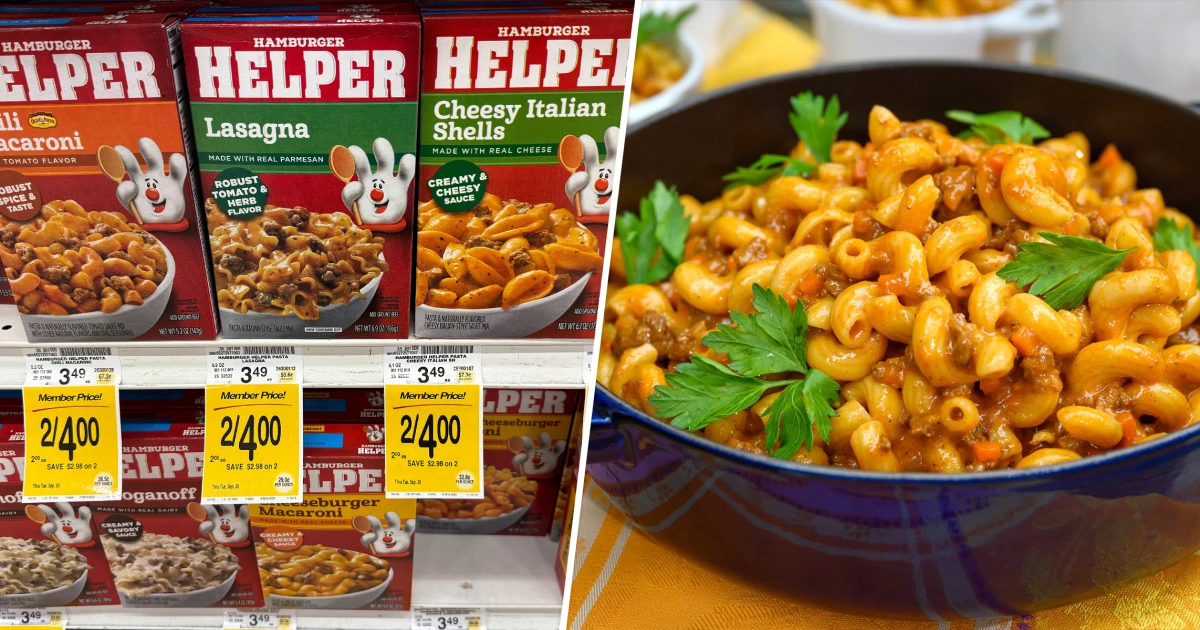
In my years as a registered dietitian, I’ve talked to a lot of people about food, and sometimes I feel like I’ve heard everything. I’ve had clients who flavored their workout water with jalapenos and cilantro, made enchiladas in a dormitory popcorn popper and topped their vanilla yogurt with ketchup. That’s something that my clients have taught me — there is an endless list of ways to take what you have and what you love, and leverage them for the benefit of your body and soul.
Of course, another part of “the everything” I have heard is about the need to stretch the food budget without requiring hours of prep every day. Meat has always been expensive, waste has always been a concern, and time and energy have always been short. Lately, though, the number of people bringing this up, or admitting to it when asked, has gotten a lot higher. They don’t have the bandwidth to meal-plan or face a big pile of dishes.
It’s not just my clients. A recent Associated Press-NORC survey found that over 50% of respondents are finding food prices to be a major stressor, even more than those worried about housing and health care. Increased packaging costs have gradually raised the price of stocking the pantry, produce prices spiked almost 40% in a single month this summer, and beef is at an all-time high. Where is a hungry household to turn?
Increasingly, it’s to Hamburger Helper.
People are looking for tips to fancify inexpensive and almost instant meals like Buldak Ramen and Kraft Mac & Cheese, too, but sales of the easy, speedy and nostalgic red box in particular are up 14.5%.
Mala Wiedemann, EVP of marketing and head of R&D at Eagle Foods, tells me that they’re aware of the bump. Although part of it may be from a mention of Hamburger Helper on the popular television series “The Bear,” in which a chef helps a teen elevate a box with a few extra tasty ingredients, the company says it is also responding to consumers’ motivations by revamping some of the flavors to be bolder and restaurant-inspired, without the price tag, and adding options like breakfast versions or microwaveable cups that can be grabbed on the go.
“People are coming back to Helper because it delivers a convenient, affordable, and tasty meal,” says Wiedemann. “We’re also pulling in new households, not just longtime fans … What we’re seeing most often is a lot of talk about taste, customizing their Helper and value — with Helper, you can feed a family for under $10 with a box and a pound of beef.”
It’s also cut the cook time to just 20 minutes and working to phase out artificial additives.
You might think a dietitian wouldn’t be happy about people buying more dinners in a box, but good nutrition is complex. Food has a big emotional impact on our lives, and I need to consider my clients’ time, money, energy, traditions and preferences as well as their nutritional needs and those of their families. Of course, I prefer it when people can cook from scratch, but that’s not always in the cards, and that’s OK. Any meal cooked at home is an opportunity to get in the habit, and I’m a big fan of that customization Wiedemann mentioned — a few swaps and additions can save money and up the nutritional punch, too.
To Cut Meat Costs:
Try budget meats with specific flavors: Pork + Stroganoff, Chicken + Ranch & Bacon, Soy Chorizo + Cheesy Enchilada, Turkey + Spicy BBQ Heat
“Lean” meats (under 10 grams of fat per serving) often cost more, but offer more protein per dollar.
Cook a full pound but freeze half for later, and fill in with canned beans, lentils, mushrooms, onion, chopped/ground nuts, pumpkin seeds or TVP (textured vegetable protein).
Instead of ground, use leftovers like rotisserie chicken, or make “Helper Supreme” with bits of pepperoni, ham and/or sausage added near the end.
Stir in high protein Greek yogurt or a beaten egg at the end (like a quick carbonara).
To Boost Nutrition:
Veggie add-ins like finely chopped green cabbage, bell peppers, frozen mixed veggies, zucchini, spinach, peas, tomatoes, green chiles, leftover spaghetti squash are a no-brainer, but there are some pitfalls. Avoid a mushy, watery mess with these tips:
Don’t add frozen veggies directly to simmering pasta — thaw and drain first. Saute/microwave fresh veggies to release water, and drain before adding. Or, use broth concentrate instead of water to add flavor.
For softer veggies, sauté with meat early on. For crisp, add on top in final minutes to steam lightly. Or, serve veggies on the side if you prefer your Helper pristine.
Add 1 to 2 tablespoons of ground flaxseed or wheat germ for fiber/minerals.
Not into veggies? Stir in 1 cup thawed cauliflower rice at the end — it blends in well.
To Make It Cheesier:
Bulk nutritional yeast adds savory depth for pennies.
1/2 teaspoon mustard, pinch of cayenne and a dash of garlic powder sharpen cheddar or Parm flavors.
1 to 2 cups shredded cheddar/mozzarella, a few tablespoons Parmesan, light Laughing Cow wedges melted in.
To Fancy It Up:
Toasted panko, tomato paste, fresh herbs, à la “The Bear.” (Tips: Make toasted panko ahead in dry skillet; store sealed. Freeze a cheaper, 12-ounce can of tomato paste in a bag, pressed flat and break off small chunks as needed — no waste.)
Chili crisp + fried egg (ramen-style!)
A few tablespoons of cream cheese or Neufchatel adds a rich tang, or tuck in a few spoonfuls of ricotta or cottage cheese for lasagna vibes.
Elevate with salsa, Sriracha, Worcestershire, ranch, Cajun seasoning, black pepper.
If you want to put ketchup, pumpkin spice or chocolate syrup on it? Well, I’m not here to judge. Using your preferences to enjoy a healthier meal is a win, no matter how wacky it may seem to others.
Southwestern Turkey Cheeseburger Mac
Here’s an easy sample recipe if you’d like to give it a shot. Even with half the meat, this version adds about 5 grams of protein, 10 grams of fiber and lots of vitamins and minerals per serving.
Brown 1 pound lean ground turkey; freeze half for later.
Add 1/2 chopped onion. Sauté, then toss in chopped cabbage for 1 to 2 minutes.
Add Helper mix + water/milk per box + 1 can diced tomatoes with green chiles.
Final touches: Stir in 1 can drained pinto or black beans, 1/4 cup pumpkin seeds, 2 tablespoons wheat germ, and let 3/4 cup reduced-fat cheddar melt on top.
Top each serving with Greek yogurt + crushed tortilla chips, and serve with a simple salad (iceberg, tomato, avocado) for the full Tex-Mex plate experience.
If you prep as you cook, it still takes 20 minutes. And, with current prices at my local store, it comes in at just $10.84 for four servings, including the side salad, but with a larger volume. If you buy in bulk, freeze portions of a big scratch batch of beans and chop your own veggies, you can come in even lower.
Which brings me to another point: If you do find yourself with a little extra bandwidth, you could try making your own even more budget-conscious one-pot meals from scratch, at least part of the time. That way, you can control things like sodium while introducing more variety. Try Valerie Bertinelli’s “Helpa” copycat, Gaby Dalkin’s DIY version or Kia Damon’s nostalgic dupe. I love Joy Bauer’s 20-minute Egg Roll in a Bowl, too.
It takes a little more effort, sure, but you don’t even have to plate it up. Just set out a bag of lettuce and a carton of yogurt by the pan on the stove, and everyone can help themselves.



